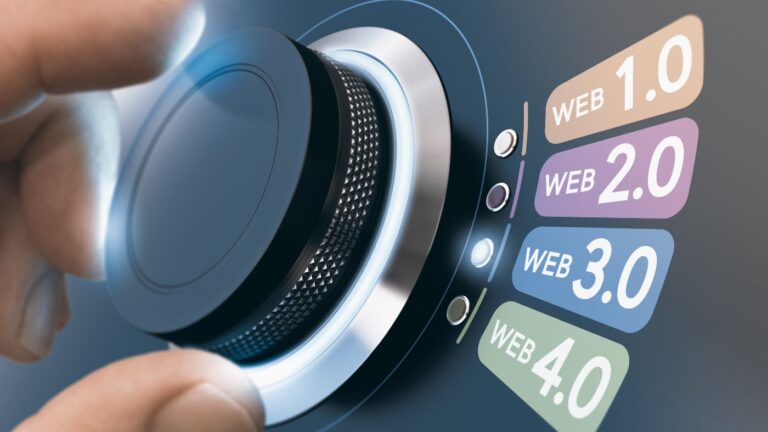
Source: news.google.com
The Internet is a global network of connected computers and computer networks.
It allows users to access and share information, communicate with each other, and access a wide range of online resources and services.
The Internet has revolutionized the way people communicate and access information and has profoundly impacted many aspects of our daily lives.
However, Web3 aims to improve the current iteration of the web. Let’s look at the potential benefits.
What is Web3?
Web3 is the third iteration of web technology known as the decentralized web.
The combination of various technologies, including blockchain and cryptocurrencies, allows users to interact with decentralized applications (dapps) and smart contracts in a more secure and transparent way.
Additionally, web3 allows users to take control of their data and digital assets instead of relying on centralized intermediaries like banks or tech giants.
So Web3 makes it possible to build a wide range of new applications and services that are impossible with the traditional web.
The traditional web, also known as web 2.0, is based on a centralized model, where many large companies control the flow of information and digital assets.
Because of this, users must trust these companies to protect their data and assets and provide fair and transparent access to services.
By contrast, web3 is based on a decentralized model, where users interact directly with each other and with smart contracts on a blockchain.
This means that users have more control over their data and assets and can access a wider range of services without relying on centralized intermediaries.
Additionally, web3 technologies like blockchain and smart contracts enable new types of applications and services that are impossible with the traditional web.
For example, web3 enables the creation of decentralized finance (DeFi) applications, allowing users to access financial services directly without banks or other intermediaries.
It also allows for the creation of decentralized marketplaces, where users can buy and sell goods and services directly without intermediaries like eBay or Amazon.
How Web3 can change the Internet
Web3 can potentially change the way the Internet works by making it more decentralized, transparent, and secure.
One of the key ways that web3 will change the internet is by giving users more control over their data and digital assets.
With web3 technologies like blockchain and smart contracts, users can own and manage their data instead of relying on centralized intermediaries to do it for them.
Users will also be able to control who has accessed their data and how it is used, making it more difficult for data to be stolen or misused.
Another way that web3 will change the Internet is by creating a wide range of new applications and services that are not possible with the traditional web.
For example, web3 enables the creation of decentralized finance (DeFi) applications, allowing users to access financial services directly without banks or other intermediaries.
It also allows for the creation of decentralized marketplaces, where users can buy and sell goods and services directly without intermediaries like eBay or Amazon.
As a result, web3 can make the Internet more open, fair and secure and enable the creation of a wide range of new applications and services.
Problems that Web3 can solve
Web3 has the potential to solve a wide range of problems. These problems include many of the problems associated with the traditional web. Some of the key problems that web3 can solve are:
- Lack of control over data and digital assets: With web3, users have more control over their data and digital assets instead of having to rely on centralized intermediaries to protect and manage them. This makes it more difficult for data to be stolen or misused and gives users more control over who has access to their data and how it is used.
- Lack of transparency and fairness: Web3 technologies, such as blockchain and smart contracts, make it possible to create applications and services that are more transparent and fair than those of the traditional web. For example, decentralized finance (DeFi) applications built on web3 allow users to access financial services directly without the need for intermediaries such as banks. This will make it easier for users to access services in a transparent and fair manner.
- High barriers to entry: A small number of large entities dominate the traditional web, making it difficult for new companies and entrepreneurs to enter and compete. Web3, on the other hand, allows users to directly interact with each other and with smart contracts on a blockchain without intermediaries. This makes it easier for new companies and entrepreneurs to enter the market and compete on equal terms.
conclusion
Web3 has the potential to solve many of the problems associated with the traditional web by giving users more control over their data and digital assets, making it possible to create more transparent and fair applications and services, and lowering barriers to entry.
CHARGING
. . . comments and plus!
Read More at news.google.com